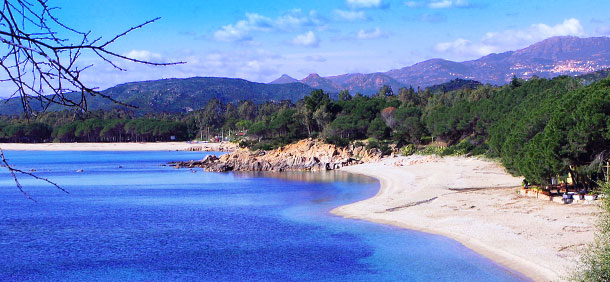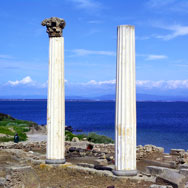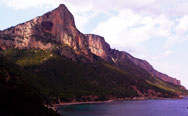- Villa search

- Canaries
- Caribbean
- Croatia, Bulgaria and Hungary
- Cyprus
- Florida
- France and Corsica
- Greece
- Italy
- Lakes and Mountains
- Madeira
- Malta and Gozo
- Portugal
- South Africa
- Spain - Balearics

Santa Maria, beach
Information
Italy’s best kept secret
With its glitzy coast and spectacularly rugged interior, Sardinia is an island of contrasts. Solange Hando discovers its sights, tastes and traditions
The sound of tinkling cow bells floated on the clear mountain air, wild pigs and sheep grazed under the trees and the rich fragrance of the Mediterranean scrubland wafted over the slopes dotted with shepherds’ huts and pockets of ancient woodlands.
“See this?” asked my guide, Ivan. “It’s juniper. It bends in the wind, but it’s as strong as us Sardinians – you can’t uproot it.”

Roman and Punic ruins in Tharros
Ivan was right. Phoenicians, Carthaginians and Romans, Arabs, rival Italian states, Spaniards and Savoyards: the island faced myriad invasions before becoming part of the newly united Italy in 1861, but its people have remained resilient. They cherish their age-old traditions, speak Sardinian with family and friends, and in a new, more prosperous age, welcome the latest invaders in search of sun, sand and sea.
Most holidaymakers head straight for its Emerald Coast – the Costa Smeralda – beautiful, glamorous and with the prices to match, though if you buy local produce and dine in your villa, it’s much more affordable. In the 1960s, the young and wealthy Aga Khan bought this north-eastern corner of the island and turned it into an exclusive retreat for the rich and famous.
The area has since changed hands but it remains prestigious. In the lovely marina of Porto Cervo, you’ll find gleaming yachts at anchor, sometimes all spruced up for the next regatta, while the sun shines on an aquamarine sea and pure white sands.
With 35 miles of coves and bays, offshore islands, dive centres, watersports, golf courses with spectacular views, top-of-the-range restaurants and designer boutiques, the Emerald Coast is a gem but, say the Sardinians, you need to go deeper inland to discover the true heart of their island, the second largest in the Mediterranean.
Provincial beauty
Ogliastra is a good place to start. This beautiful province stretches down the central east coast and – for much of the year – it’s one of the island’s best kept secrets. Half way along this pristine shore, the pretty resort of Santa Maria Navarrese dozes among pines and mimosa, a sprinkling of villas around a quiet harbour. The surrounding hills are ablaze with golden gorse, crowned by dramatic rocks guarding the village like sentinels.
'We explored the Golgo plateau, gazing at the gaping mouth of Europe�s deepest chasm, plunging 967ft into the bowels of the earth'
To the north are steep cliffs and paradise beaches that can be accessed only on foot or by boat. Turn south and you come to sweeping white sands framed by juniper and orange trees and flaming red rocks sculpted by the sea. Arbatax has a small fishing harbour and a fairy tale station where you can board the narrow gauge Trenino Verde for a scenic ride into the hinterland.

Giradili Cliff, one of the highest in Europe
Or you could trek, cycle or drive around the ever-winding roads, or set off on horseback; whatever you choose, the wild open spaces of Ogliastra and neighbouring Barbagia will take your breath away. Don’t miss the mighty Giradili cliff, one of the highest in Europe, or the ‘Grand Canyon’ of Gola Su Gorroppu where cliffs tower over 1,600ft.
Above the village of Baunei and its pastel-coloured lanes, we explored the Golgo plateau, gazing at the gaping mouth of Europe’s deepest chasm, plunging 967ft into the bowels of the earth, and the nearby bathing pools used for ritual cleansing by the Nuraghic people 4,000 years ago.
In this province of superlatives, deer and wild sheep – mouflons – live undisturbed in the nature parks, springs gurgle through evergreen forests and, in the shadow of rocky outcrops, villages cling to the slopes.
home | destinations and editorial | villa search | property for sale | car hire | flights | services
villaseek blog | contact villaseek | links and resources | advertise your villa© Dune Root Ltd and Villaseek.com 2012 - Caribbean
- Canaries